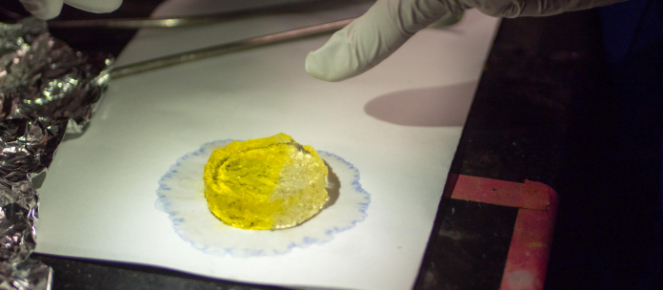Summer 2024 on-line application.
Applications are accepted year round.
In this program, local science teachers participate in laboratory research under the mentorship of MRL graduate, post-doctoral and faculty researchers. Teachers work collaboratively to translate their research experiences into the development of inquiry-based lab projects for science classrooms. The total teacher stipend over the course of the two year program is $10,000.
For 2024 program information including an approximate timeline and stipend information, please see the "Summer 2024 RET info" pdf to the right. Applications are accepted year round. This program does not provide housing, so we are limited to applications from local teachers.
Information on our current teacher-intern projects is below, for past projects please visit: View and Search Past Teacher Projects. (Each teachers individual web page has links to resources of their classrom projects).
For the first summer of the MRL RET program (RET1), teachers are placed as interns in UCSB research groups for 6 weeks. For the second summer of participation (RET2), teachers work for 4 weeks developing a science curriculum for presentation to their colleagues at our annual workshop. Participants are encouraged to develop units in which students will collect hands-on scientific data, make responsible conclusions about the meaning of the data and communicating their findings to other students.
The teaching resources developed by the teachers will be presented at annual workshops for science teachers throughout the Santa Barbara County area. The next workshop will be in Spring 2024.
Are you using a RET curriculum project in your own classroom? If so, please take our short SURVEY!
For inquiries about this program please contact Frank Kinnaman: frank_kinnaman [at] ucsb [dot] edu.
An Education Project at the Materials Research Laboratory
Sponsored by the National Science Foundation

